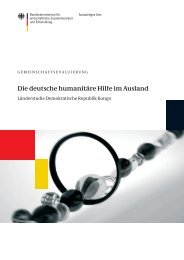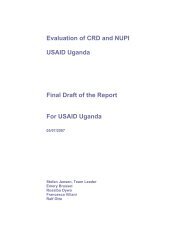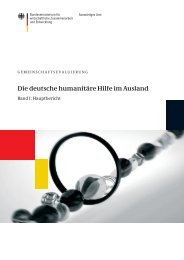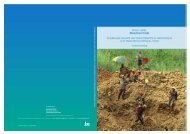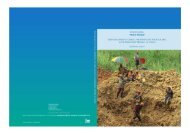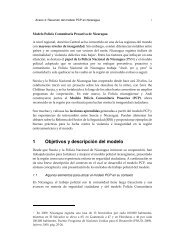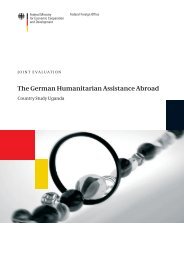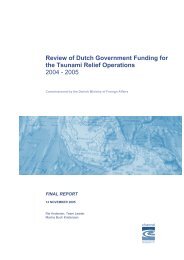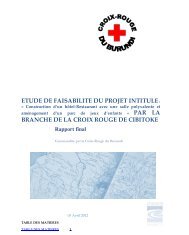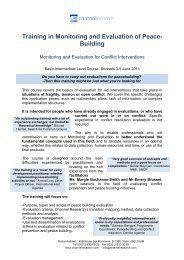A ripple in development? - Channel Research
A ripple in development? - Channel Research
A ripple in development? - Channel Research
You also want an ePaper? Increase the reach of your titles
YUMPU automatically turns print PDFs into web optimized ePapers that Google loves.
B. Poverty, livelihoods and economic recovery<br />
Thematic scope: This theme will look at relevance and effectiveness of<br />
<strong>in</strong>ternational and national <strong>in</strong>itiatives to recover livelihood for the immediately<br />
affected people and what <strong>in</strong>tended or un<strong>in</strong>tended changes that<br />
were brought about by such efforts. It will try to f<strong>in</strong>d out about perceptions<br />
and knowledge by support<strong>in</strong>g organisations about exist<strong>in</strong>g livelihoods.<br />
<strong>in</strong>clud<strong>in</strong>g pre-tsunami poverty reduction processes and <strong>in</strong> what<br />
way chronic poverty and conditions for this was and is affected dur<strong>in</strong>g<br />
the period after the disaster.<br />
a) How have economic actors, from farm<strong>in</strong>g households to <strong>in</strong>ternational<br />
enterprises, revived and reassessed their activities after the tsunami,<br />
and what has been the role of aid <strong>in</strong> contribut<strong>in</strong>g to this process?<br />
b) What is the relative importance of external aid <strong>in</strong> livelihood support<br />
and economic <strong>development</strong>, as compared to locally generated <strong>in</strong>vestment<br />
resources and remittances?<br />
c) To what extent have livelihood efforts recognised the differ<strong>in</strong>g livelihood<br />
circumstances and opportunities of men and women and of<br />
children and of groups with different needs and capabilities?<br />
d) To what extent has the disaster created chronic poverty? Has recovery<br />
programmem<strong>in</strong>g recognised such risks and attempted to address<br />
them?<br />
e) To what extent has recovery programmem<strong>in</strong>g been realistic and<br />
aware of the different approaches needed to address short-term<br />
transient poverty versus more chronic poverty?<br />
f) To what extent has there been an <strong>in</strong>tegration of recovery efforts with<br />
national policies to promote pro-poor growth and consolidate social<br />
protection?<br />
C. Rebuild<strong>in</strong>g the social fabric and community <strong>development</strong><br />
Thematic scope: This theme will try to capture the recovery or changes <strong>in</strong><br />
the social situation directly or <strong>in</strong>directly caused by the tsunami and the<br />
RRD 7 efforts at particularly community and household levels and often<br />
related to hous<strong>in</strong>g and community plann<strong>in</strong>g. It will <strong>in</strong>clude questions on<br />
knowledge about the social, political and cultural context by the <strong>in</strong>terven<strong>in</strong>g<br />
organisations and the relevance and realism of their <strong>in</strong>itiatives at<br />
various stages of the recovery period.<br />
a) How have communities, which have been shattered by the tsunami,<br />
rebuilt their <strong>in</strong>ternal relations, and what role has community <strong>development</strong><br />
assistance played <strong>in</strong> this process?<br />
b) To what extent have hous<strong>in</strong>g and reconstruction programmes<br />
resulted <strong>in</strong> functional communities with access to basic <strong>in</strong>frastructure,<br />
services and livelihood?<br />
7<br />
Relief, rehabilitation/reconstruction and <strong>development</strong><br />
130



